Reversing away from the start line, I could feel the tension rise.
This wasn’t how it was meant to happen. I’d been totally in the moment, poised but feeling the pressure, as I waited for the green light’s permission to make my first attempt at climbing the legendary Shelsley Walsh hill. A twisting thousand-yard track in Worcestershire, about 140 miles northwest of London, it is the oldest motorsport venue in the world, and I was there to tackle the second annual Hagerty Hill Climb in my late grandfather’s MGA roadster. Notably steep, with an average gradient of around 11 percent (at its steepest 16 percent), accomplishing a fast getaway would be key to a good run.

My presence made public over the commentator’s tannoy, I was guided into position at the inclined start by a marshal. But just as soon as the wooden chock to prevent us from rolling backwards was secured behind the roadster’s rear wheel, I was instructed to manoeuvre a retreat. Safety is taken seriously at Shelsley Walsh, and rightly so, which is why they couldn’t let me go. Driving an open car, I discovered, calls for a closed full-face crash helmet, and the one I was wearing wasn’t right. Rather than retire, the solution was to raise the MGA’s leather soft top, a procedure which becomes unfathomably difficult when the circumstances demand it to be completed in haste. I was glad to have a co-pilot, my dad Steve, there to help.
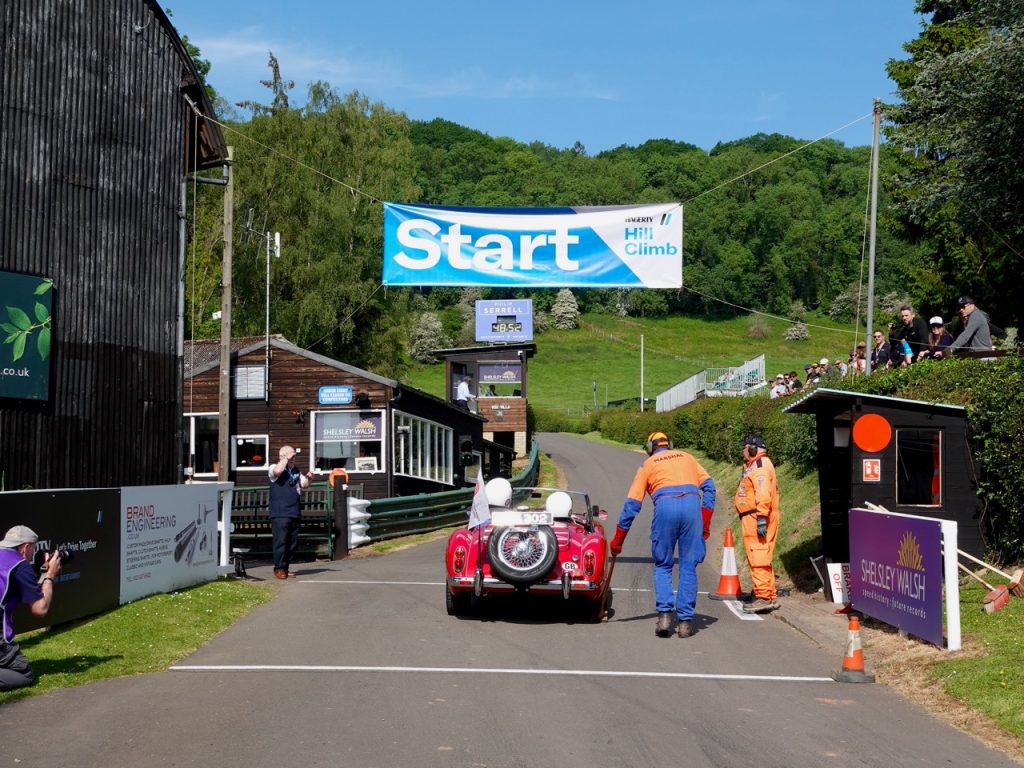
I was flustered (let’s be real: a sweaty mess) but relieved that we’d not been forced to withdraw, and the marshals again called us forward. Reacquainted with the start line, I knew the only thing that mattered now was the thrill of having a go at what lay ahead. That’s when I noticed the blood. Claret red to match the A’s Chariot Red, it poured down my forefinger and into my palm, some unfelt casualty of the kerfuffle. “Dad, I’m bleeding,” I squawked, by now near hysterical. “GO!” he cried out in response.
I am not proficient in the art of the wheel spin, so our off contained no cloud of burnt rubber. No problem; I was content that I’d already made enough of a spectacle of myself in front of the crowd.
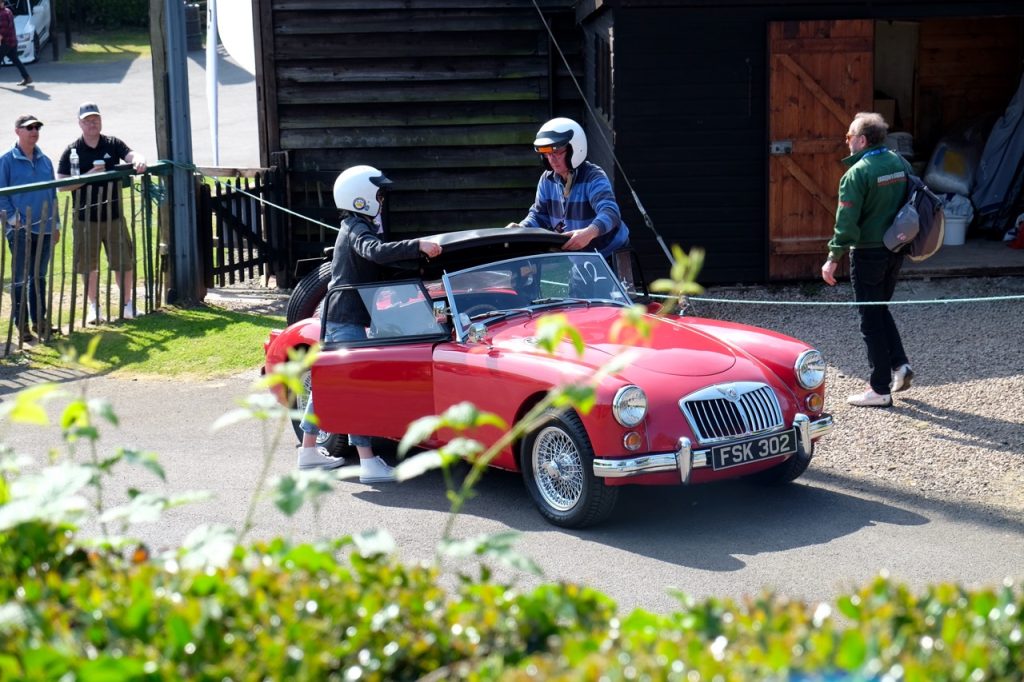
By design, hill-climbing is a form of motorsport in which drivers compete against the clock on an uphill course. Considered an heirloom upon which novice hill-climbers like myself can cut their teeth, Shelsley Walsh has remained unchanged since it opened in 1905—aside from the addition of tarmac in 1930. The outright record at Shelsley, which was set in the 700-hp Gould GR59, is 22.37 seconds. With neither the means nor the desire to chase such supersonic speeds, I signed up to Hagerty UK’s non-competitive ‘run what you brung’ weekender to find out if my grandfather’s beloved 80-hp sports car would make it up there at its own pace. Not a tournament, nor a sedate pootle, the event succeeded in putting my nerve—and the stamina of the machine that I’ve been entrusted with—to the test.
My grandfather, whom I called Dodo, was a very formal man, and the MGA was where he let the wind ruffle his slick, side-parted hair. Built in 1960 for American export, Frisky spent her first three decades cruising the boulevards of California; it’s a period of her history we know nothing about. In 1990, she was re-imported to the UK, converted to right-hand drive, rebuilt, and rallied to victory in the Monte Carlo Challenge. Fresh from her triumph, Dodo bought her as a retirement present for himself.
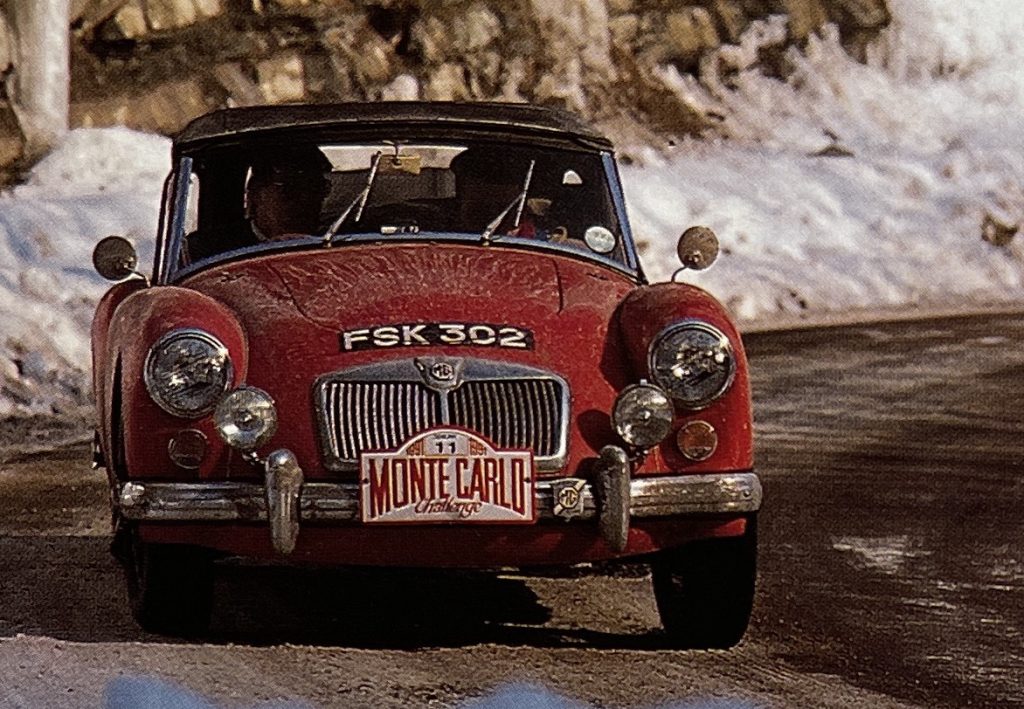
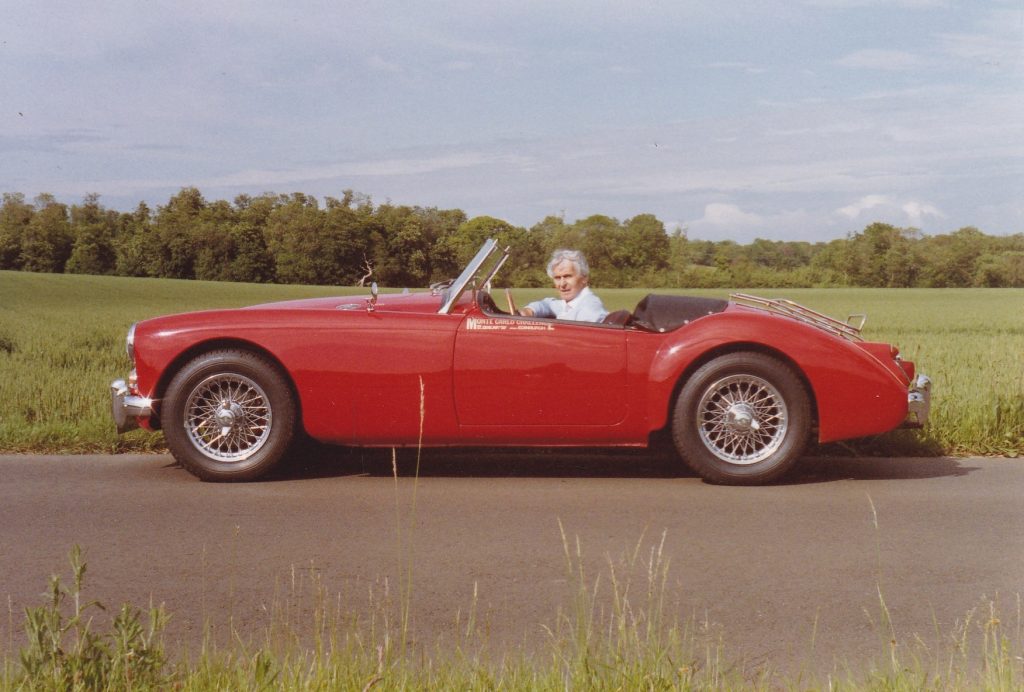
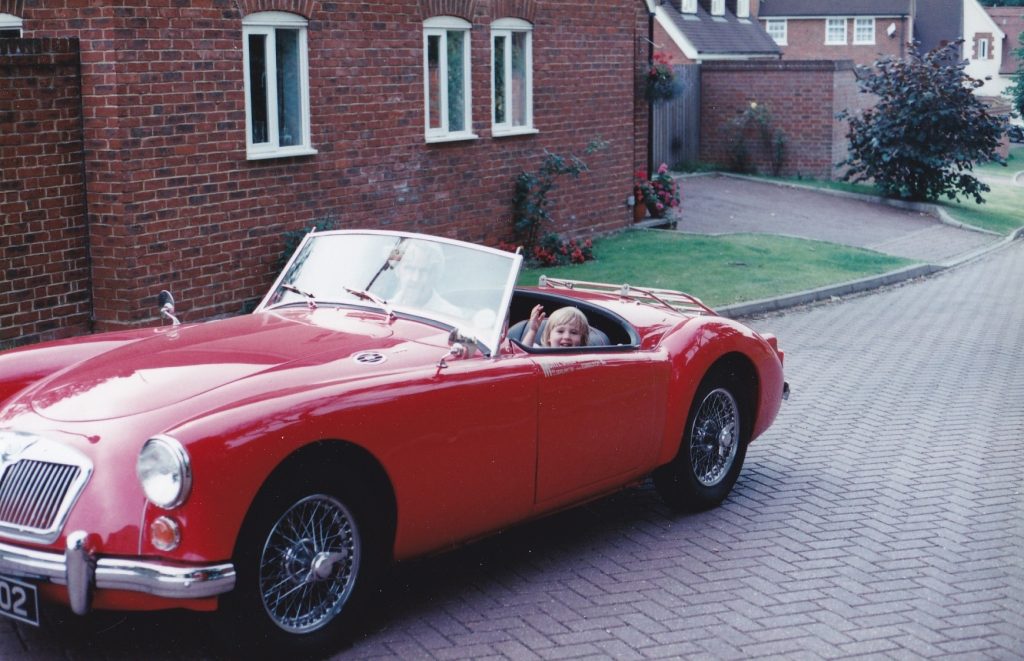

At 92 years old, just months before he died, he still flew along the racing line on quiet country roads; he never lost the bottle to put his foot down. Somewhere in between terrified and enjoying the ride, I was too distracted to pay attention to the nuances of his skill, but they must have imprinted on me somehow. I’ve already driven Frisky to some of the most extreme locations accessible to traffic in the UK, including an emotional ascent up the infamous Hardknott Pass, a single-track road in the Lake District with gradients of up to 33 percent, steep switchbacks, and unguarded drops. This run up Shelsley Walsh seemed a good next step.
Lulled into a false sense of assurance on the opening straight, I steered FSK 302 (affectionately known as Frisky) with conviction through the course’s first two curves. This isn’t so bad, I thought, but our sprightly 30-ish-mph rate of travel wasn’t long-lived. Narrow and lined with stone walls, barriers, and hedges, Shelsley’s topography also features an unforgiving camber, which in a low-slung roadster with a long nose gives greater magnitude to its challenge. Leaning forward, white knuckled, I steered Frisky steadily into and out of the track’s near-90-degree left- and right-hand bends—without drawing breath. The achievement felt phenomenal.
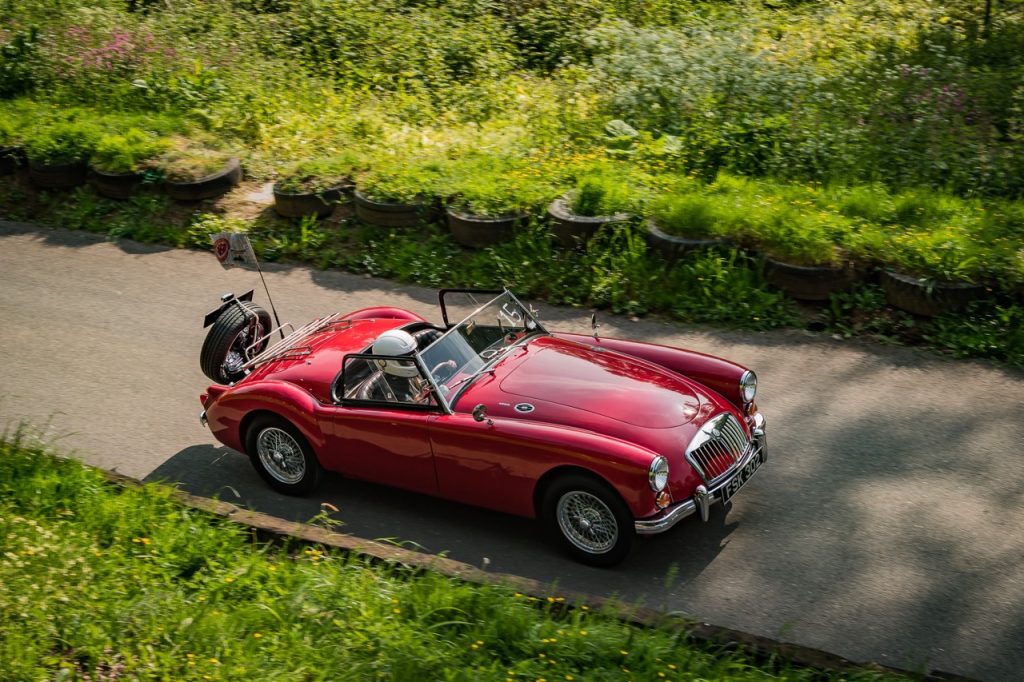
On the final dash to the finish, Frisky was noticeably relieved as I slipped her from second into third, then fourth, settling her comfortably into a lower range of rpm. At the summit, instinctively, I checked my grandfather’s watch. It doesn’t work, but I like to wear it, and I was curious to know how rapidly we’d made our ascent. I looked to his photograph, which I’ve taped to the inside of the windscreen, and wondered how he’d appraise the performance. Before I made any journey in a car, Dodo always left me with these parting words: “Drive safely, sweetheart.” I’d managed just that on the hill.
To satisfy participant curiosity, organisers timed each vehicle’s runs. Lasting a steady-going 67.01 seconds, this maiden voyage set the tone for a dignified two days of climbing. Sharing the high by taking turns behind the wheel of FSK with my father and my fiancé, James, the MGA coped commendably, only tiring in her efforts when the gearbox found the going a little too tough. “With the prolonged extra load, the oil in the gearbox was getting too hot and not lubricating the third-gear synchromesh hub adequately,” Dad explained. “This had a knock-on effect dropping back into second.” On duty during the initial instance of this niggling issue, James, struggling to persuade FSK into gear, slowed to a temporary halt—excruciatingly close to the finish.
The message communicated—incorrectly—over the track’s PA system was that the MGA was likely suffering a blown head gasket. One hundred metres back down the slope, Dad felt useless as he listened for further news. “That ten minutes waiting to see if the car drove back under its own steam felt like an eternity,” he said. “But she did, and she did us proud.”
Until it’s over, mechanical drama does nothing for a driver’s ego, but James handled the immediate stress of it well, and he didn’t let FSK’s hiccup deter him from returning to the seat. The reward for taking part as a team was that the duel was fought against the hill rather than each other. Tamed by the respect we all have for Dodo’s car, we took a calculated risk and maintained a healthy level of sporting form. But, for the record, I’d like it known that I beat Dad on day one by 0.71 second.
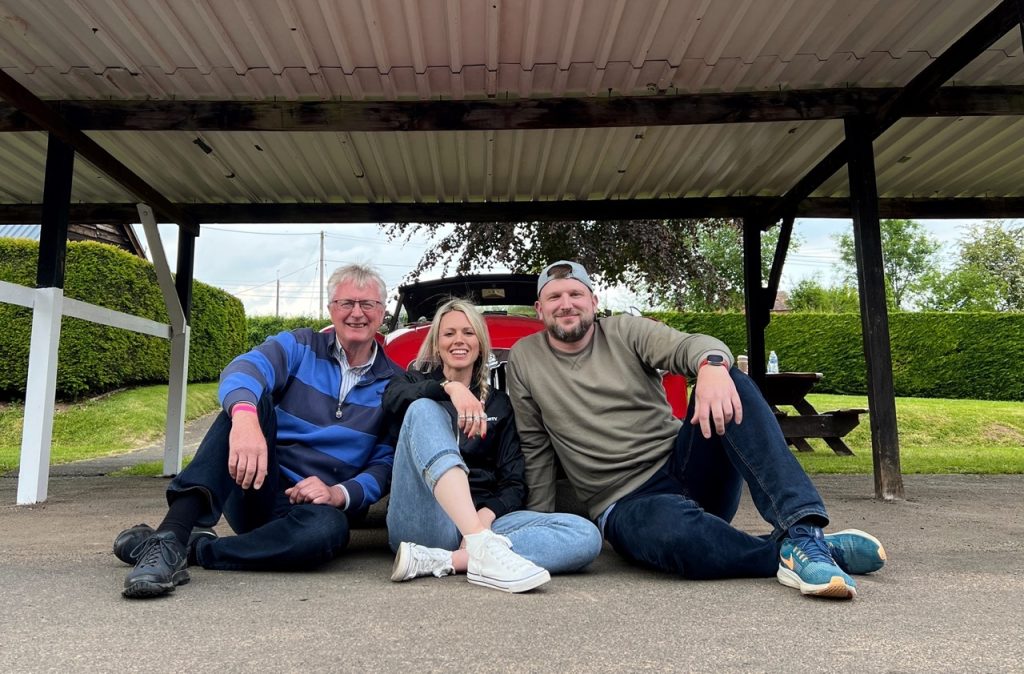
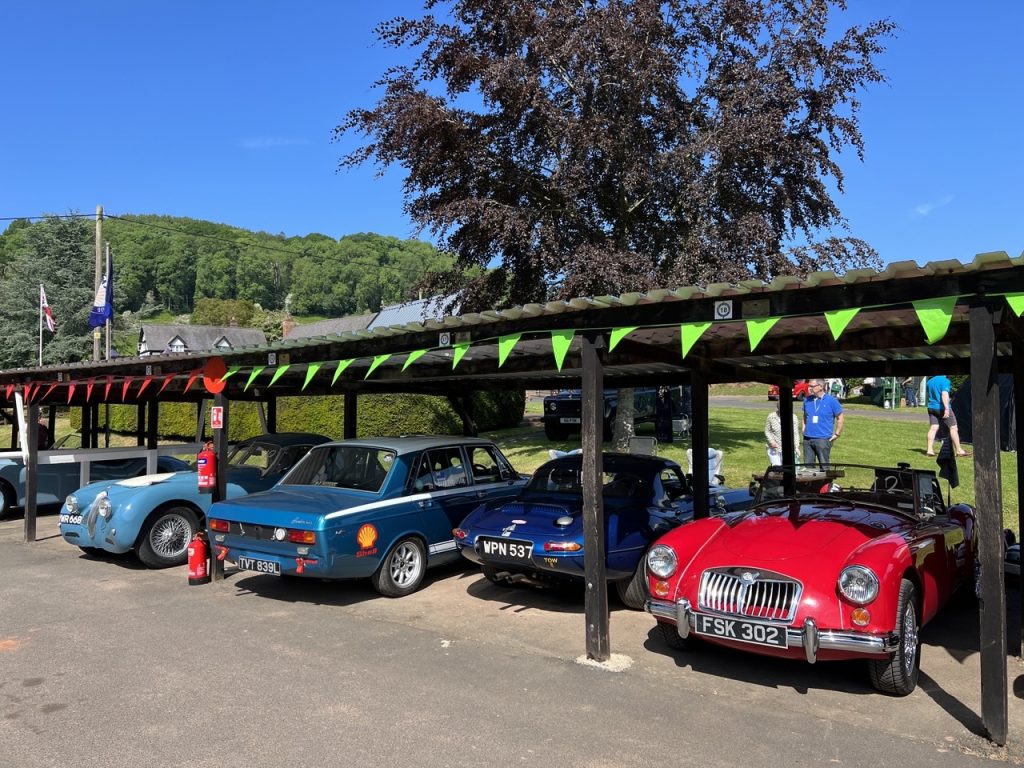
Back in the paddock, parked up alongside everything from an Austin Healey to an Alvis Beetleback, it was a typically English celebration of fabulous cars and the people who drive them—spectators supped Pimm’s while drivers drank tea—and it was there I made the acquaintance of Jonathan Evans and his 15-year-old daughter, Bella. “We’re definitely outnumbered,” confided Bella, lady to lady, against a racket of rally cars, including an Audi Sport Quattro and MG Metro 6R4, warming up their engines. “I think more of us need to come and see it, and try it for themselves. I came because I wanted to get a bit of a buzz.”
A passenger in her dad’s red Robin Hood 2B, an open two-seater with considerably more oomph than my own, (it made the run up the hill in 43.51 seconds), Bella’s love of automobiles is in the genes. “I thought it would be a nice father-and-daughter bonding day,” said Jonathan, who runs a classic car business in South Wales. “She’s always encouraging me to go faster,” he beamed.
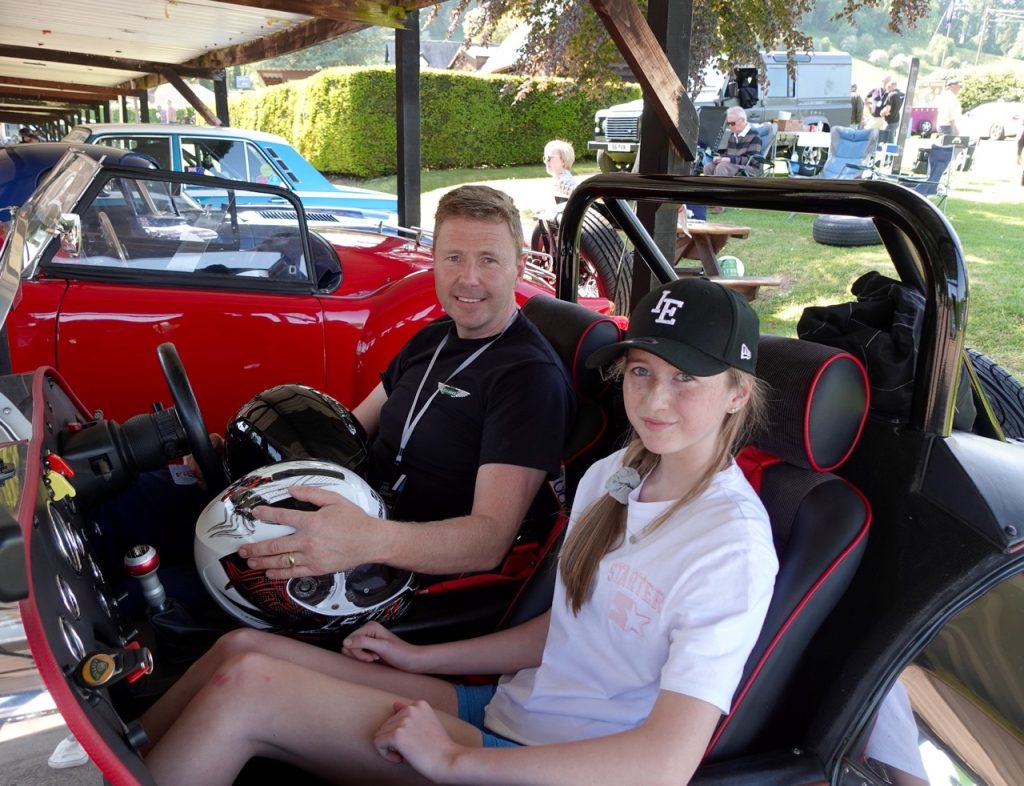
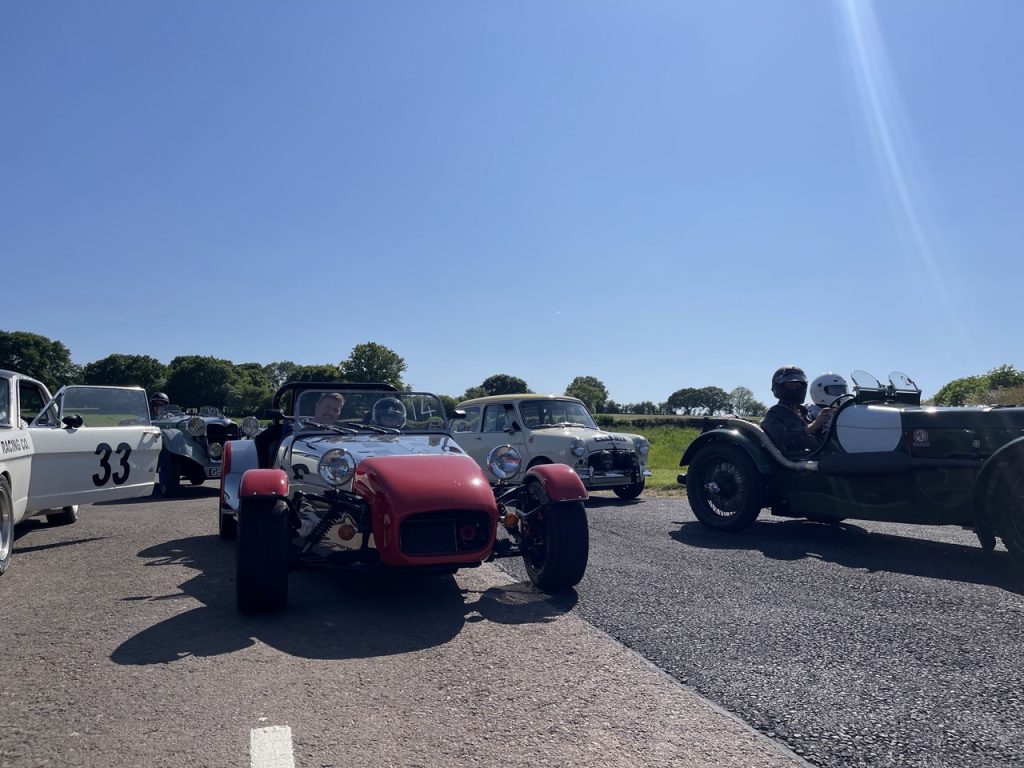
“I do love going fast, but the main thing was just to get up the hill,” added Bella, before Jonathan picked up the conversation: “I was nervous. It’s our first hill climb, and it’s surprising how steep it is. You don’t realise until you’re on it, but we just put our helmets on and give it what for.” That is, I interrupted, until they encountered a stranded MGA on the home stretch; Jonathan and Bella had been in the same batch of cars as me and Frisky. “I just wanted to get out and help,” reassured Jonathan, as I offered my apologies. “We weren’t disappointed, we’re just here to enjoy ourselves and take in the great atmosphere.” Such a considerate response epitomised Hagerty’s event.
Before we said goodbye on a promise to keep in touch, Bella waxed lyrical about her impending graduation from plus one to pilot. “I can’t wait to get my licence. Dad’ll always tell me what to do, but when he’s passenger, I’ll be in charge.”
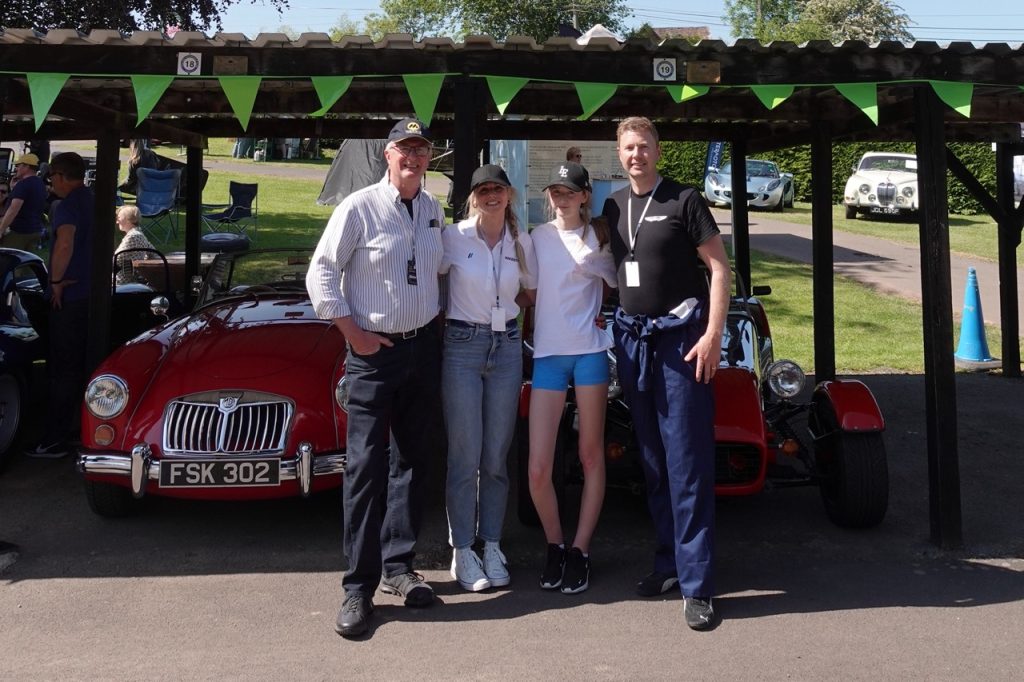
Her declaration is to be admired. My own dad is my champion, but that doesn’t make me immune from getting defensive when he feels compelled to provide an instructive commentary about the way I drive, particularly when we’re out in the MGA. Constructive criticism, that’s what he likes to call it. And there have certainly been occasions when it is called for, including at the Hagerty Hill Climb. I listen to him because it’s important to learn. When I took over custodianship of the MGA six years ago, I had no idea the car would become a part of the fabric of my life. But it quickly summoned a sense of adventure that was revelatory, and without my father’s guidance I would have struggled to indulge it.
Experiences like the Hagerty Hill Climb allow me to discover new ways to find fulfilment behind her wheel. Bella, if you’re reading this, I can’t wait to see you again at the top of Shelsley Walsh. Let’s show them what we, the next generation of drivers, are capable of.
Follow Charlotte’s Adventures with Frisky at www.instagram.com/charlottevowden/


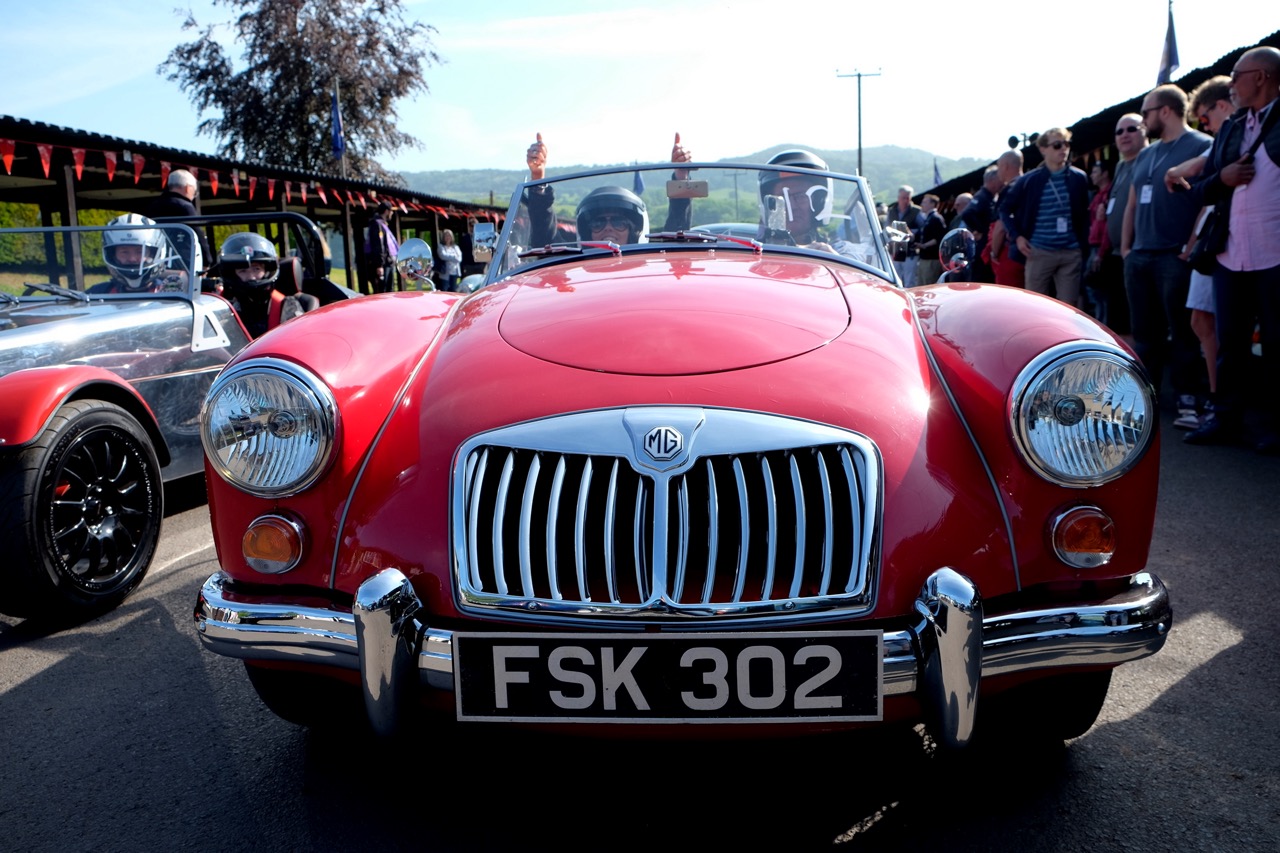
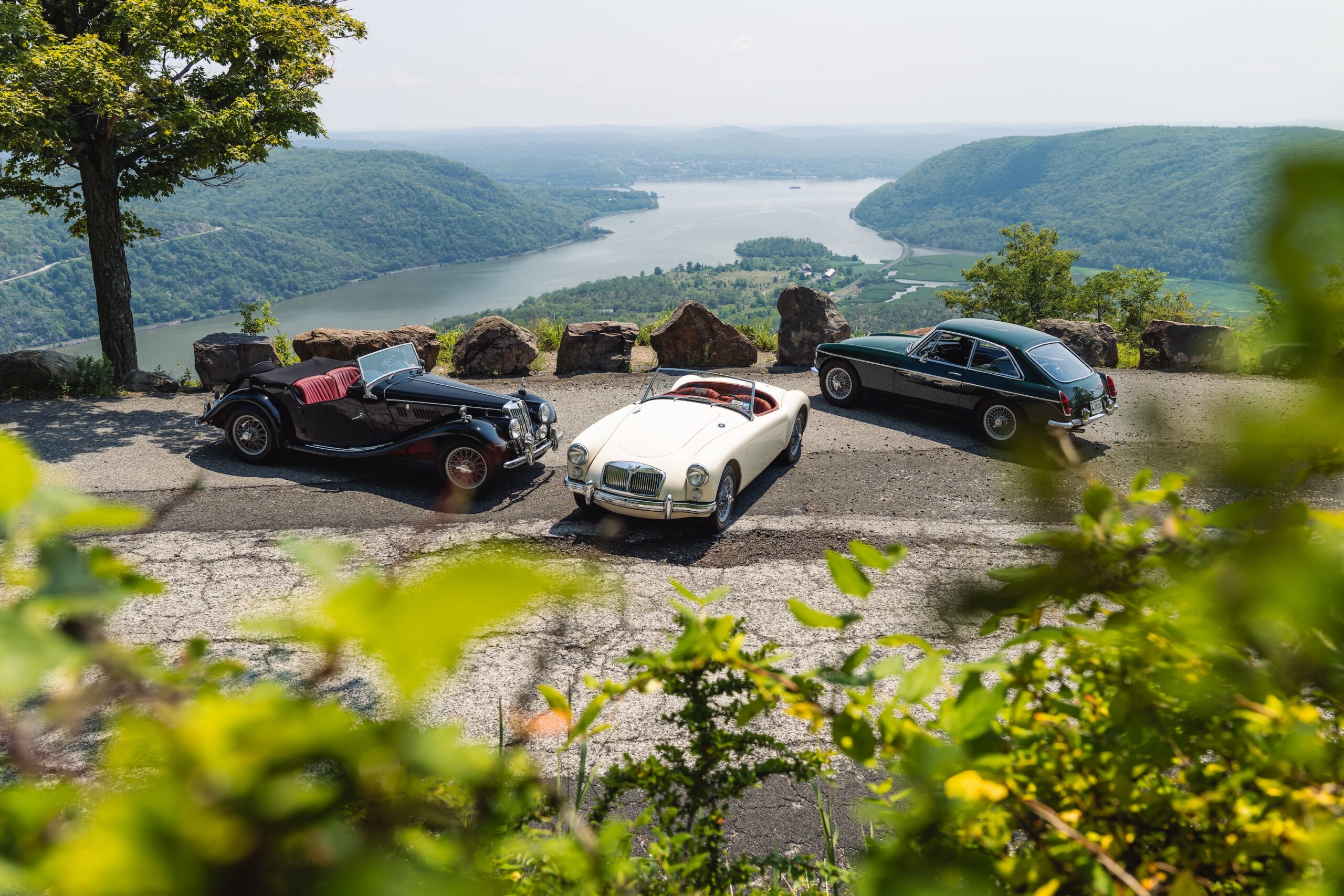






Such a lovely read. The adventures we witness our fathers having with cars and how that infects us will be one of the great wonders of the universe!
Great article, love Frisky, I think I will have to take my Dad’s 1934 Morgan F4 up the hill (it’s not far from Malvern) when I bring her home in the next month or two.